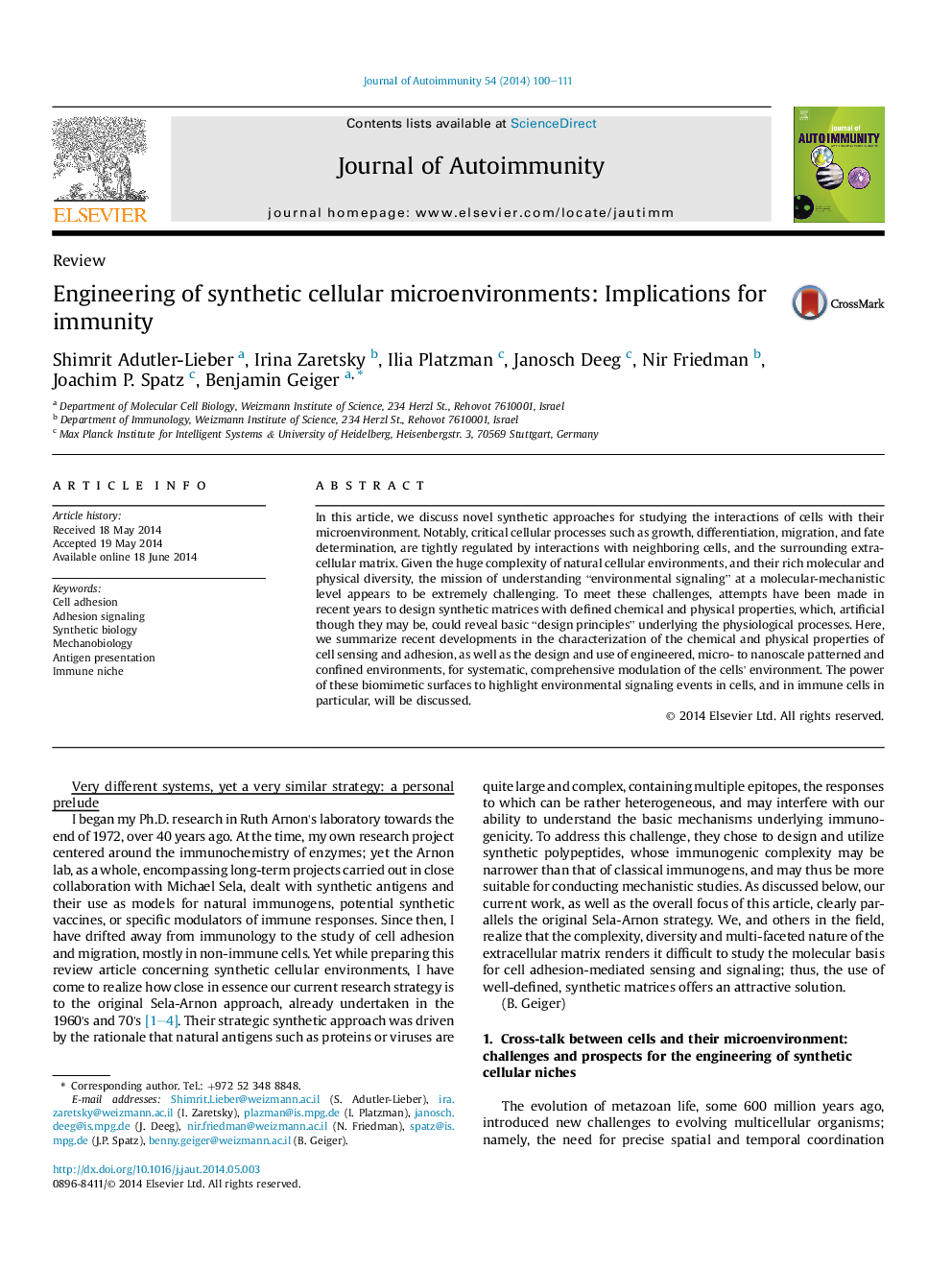| Article ID | Journal | Published Year | Pages | File Type |
|---|---|---|---|---|
| 3367788 | Journal of Autoimmunity | 2014 | 12 Pages |
•Design and use of engineered synthetic patterned matrices and confined environments.•Synthetic matrices for systematic modulation of the cells' environment.•Highlighting environmental signaling in immune cells using biomimetic surfaces.
In this article, we discuss novel synthetic approaches for studying the interactions of cells with their microenvironment. Notably, critical cellular processes such as growth, differentiation, migration, and fate determination, are tightly regulated by interactions with neighboring cells, and the surrounding extracellular matrix. Given the huge complexity of natural cellular environments, and their rich molecular and physical diversity, the mission of understanding “environmental signaling” at a molecular-mechanistic level appears to be extremely challenging. To meet these challenges, attempts have been made in recent years to design synthetic matrices with defined chemical and physical properties, which, artificial though they may be, could reveal basic “design principles” underlying the physiological processes. Here, we summarize recent developments in the characterization of the chemical and physical properties of cell sensing and adhesion, as well as the design and use of engineered, micro- to nanoscale patterned and confined environments, for systematic, comprehensive modulation of the cells' environment. The power of these biomimetic surfaces to highlight environmental signaling events in cells, and in immune cells in particular, will be discussed.
